Out east in Alpine — on the edge of the Cleveland National Forest — is San Diego County’s only accredited big cat + bear sanctuary, Lions Tigers & Bears (LTB).
The countryside location is home to more than 5 dozen animals rescued from the exotic animal trade, all under the care of LTB founder, Bobbi Brink, and her team. The no kill, no breed, no trade, no contact facility has been helping animals since 2002 — and for Bobbi, it’s a 24/7 passion.
We visited the sanctuary + asked Bobbi 15 questions about this special place, her ongoing mission, and the furry residents who call LTB their forever home.

Lions Tigers & Bears is located at 24402 Martin Way in Alpine, in San Diego’s East County. | Photo via Monica Garske + SDtoday
Q: What is Lions Tigers & Bears?
A: We rescue animals and provide a lifetime home for them. We’re also an education center. We work all over the country with first responders and help get animals out of places that they shouldn’t be. We are their voice. We work on laws that would protect them. We opened this site in 2002 — we started this from a cow pasture.
We have what we call “Member for a Day” visits, so anyone can sign up to become a member for a day — or become a member when you’re out here — and we do the member visits Wednesday-Saturday.
Q: How big is the sanctuary? How many animals live here?
A: It’s 93 acres. We’ve got 65 animals right now — 17 different species.
Q: What inspired you to open Lions Tigers & Bears 20 years ago?
A: Seeing how terribly these animals are treated. And I think most people not knowing about the exotic animal trade — and that it’s second to drugs, weapons, and human trafficking. And how badly the animals are not only treated, but they’re disposed of and they disappear — and there’s no federal tracking. We’re trying to create awareness and at the same time, help us do better by our exotic wildlife.
Q: Have you always had a special connection with animals?
A: I’ve always had a connection. I was raised with animals — even livestock animals — I’ve always loved and had a place in my heart for animals.
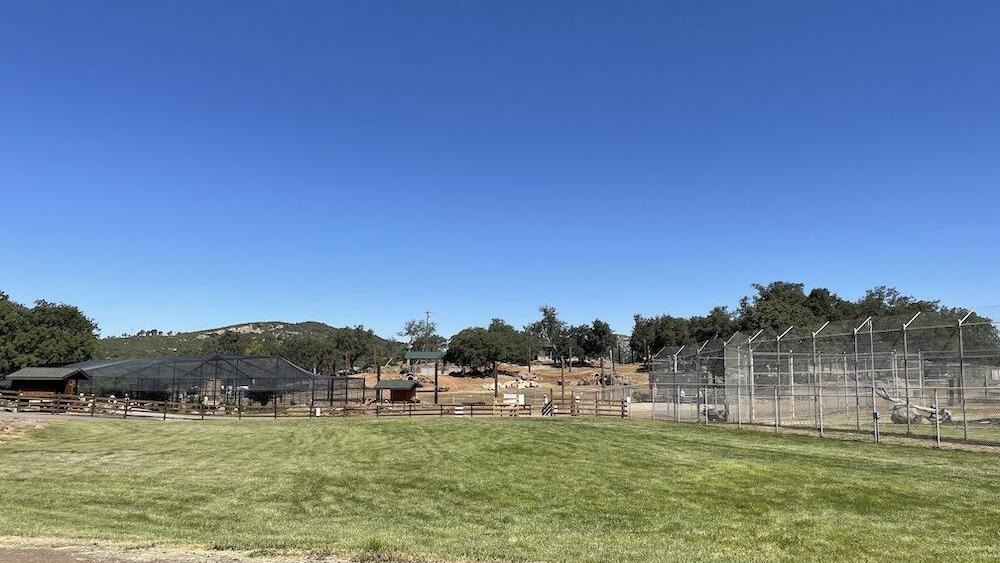
A wide view of just one part of the sanctuary in San Diego’s East County. | Photo via Monica Garske + SDtoday
Q: What does the accreditation by the Global Federation of Animal Sanctuaries and the American Sanctuary Association mean for your standards + daily operations?
A: It’s super important because it’s like your peer review — it keeps you on top of things. They go through your financials, your safety records. Every single animal is accounted for — we know why it’s here and we know when something happens to it, or it passes [away]. It just keeps sanctuaries totally accountable to be a sanctuary because a true sanctuary will never buy, sell, trade, breed animals. If you’re at a true, reputable facility, you won’t be having hands-on contact with an exotic animal. If you’re touching the animals, you automatically know you’re in a place that’s not good for animals in the long run, at all. Most of those animals — they disappear.

LTB has a wildfire evacuation plan in place in case of emergency; the animals know how to get into and out of their emergency transportation cages. | Photo via Monica Garske + SDtoday
Q: What’s a typical daytime visit to the sanctuary like?
A: Bring a bottle of water. You come to the country, and you’ll enjoy a couple hours here. You’ll check in and watch a little introductory video and then the keepers — they’re trained volunteers — they’ll take you around and introduce you to all the animals and tell their stories. And some people can feed the animals out of their diets and that helps us raise money for their food. It’s just a good, fun learning experience — there aren’t many people who walk away saying they didn’t learn something about the exotic animal trade. And the sanctuary is beautiful and very relaxing, for both people + animals.
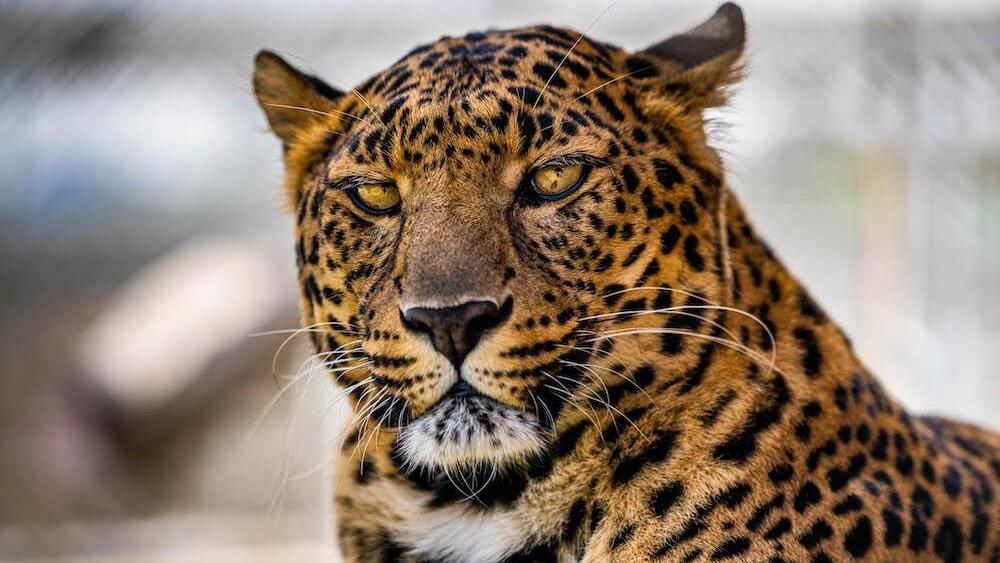
Conga the leopard has lived at LTB since she was a baby. | Photo via Lions Tigers & Bears
Jean-Philippe Angers
Q: Can you tell us about a few of the animals — their names + their stories?
A: Conga is an African leopard. She’s been here since she was about 3 weeks old — she’s probably 16 or 17 years old now. She came from Texas, from a breeder who was in all kinds of trouble.
Then there’s Louie, the white lion. He’s a retired entertainment animal who actually came here with two female lions who he had been next to his whole life, but never been in [a habitat] with. We were able to put Arousha, Zulu, and Louie in together for quite a few years before we lost Zulu and Arousha, which was really nice because they got to live out their lives, finally, with a little bit of dignity and together.
And then Sugar Bear, who’s a black bear. He came from a rescue that closed that ran out of money in Ohio, and they had 33 animals and only one bear, so Sugar Bear came here. He was kept in a small, 10-ft corn crib and a little den.
So, when we got him in the hauler, he trucked maybe 12,000 miles with us, delivering the other animals across the country. He was happy as could be in the front of the hauler, a 7x7-ft square, traveling. Every time we’d open the door, he was eating and happy.
And we brought him home. All the animals go into quarantine, for a minimum of 30 days. It’s a smaller area so they can get used to their surroundings, get used to their keepers, learn how to shift, learn how to get into their emergency transfer cage — so if they need medical or if there’s a fire or something — before they get into their big habitats.
So, when we took Sugar Bear out into the big habitat and put him into his very own bedroom, when we opened the door for Sugar he was scared to death. It took him about 10 days or so to finally put his foot out the door. He’d go out and come back, get out there and play in the dirt — it was the first time he’d ever touched dirt. And then the open sky for him. Finally, he makes the whole 3.3 acres of the habitat his home now — he swims in the pool and has his own little den culvert he shares with five other bears.

Sugar Bear loves to roam in his habitat and look up at the sky. | Photo via Sharyn Umana-Angers + Lions Tigers & Bears
Q: What do the animals eat — and how much?
A: Big Cats are carnivores. They eat an all raw-meat diet. Since we don’t feed out whole prey at Lions Tigers & Bears, we need to ensure that they receive all their necessary nutrients, so they also receive vitamins and supplements to enrich their daily diets. They are fed five days a week. The two-day fasting is what they would experience in the wild if they failed to catch prey and is natural to their biology. Daily diets range from 1 to 15 pounds per day depending on the animals — with the lions and tigers eating 10-15 pounds, the midsize cats like leopards eating 3-4 pounds per day and bobcats and servals eating 1-2 pounds per day.
The bears are omnivores. Their diets consist of proteins (cooked meats, raw nuts, raw fish), fruits and vegetables. They can eat up to 20 pounds of food a day, depending on the time of year. Our keepers spread their food in their habitats so they can forage, which mimics their innate behavior.
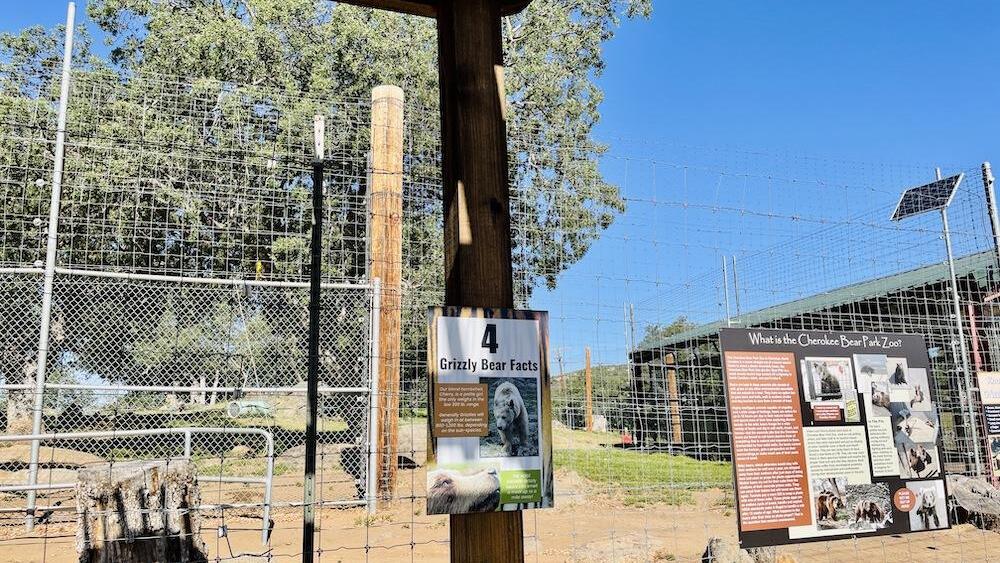
LTB is home to several bears. | Photo via Monica Garske + SDtoday
Q: What is a rescue operation like for you?
A: Whatever animal we take in here, we have to be able to provide for — for life. Tigers live 20 years, bears 30. We have two bears that are 32 and 33. You have to be able to support them for life, so that’s expensive.
We have one of the only self-contained animal haulers, so we have on board first aid for animals, first aid for people. We have capture equipment. Sometimes, we literally have to go in and build something to get the animals out. Sometimes, we catch them up in the rolling cage. Every situation is different. Sometimes, we’ll be working with law enforcement, so they’ll be serving a warrant and we’re working under their rules first. Usually they go in and secure the people, we go in and secure the animal.
Every single rescue can be a little bit different. Some of the cases we can work on for four, five, six years in order to take these animals out of the disgusting conditions they’re in. Sometimes you’re running an uphill battle and it can take forever, but we just don’t give up. One animal at a time, and take what we can provide for and build for. Building habitats is the most expensive thing.

This is Nola the white tiger. | Photo via Jarrod Valliere + Lions Tigers & Bears
Q: How can people help the sanctuary?
A: Donating — if you can afford to. Helping with habitats, volunteering, sharing our social media on your social media really helps. Checking in on your social media to spread the word. Every little bit adds up. I have an awesome team out here.
Q: What are some of the “behind-the-scenes” or overnight experiences available at the sanctuary?
A: So, I turned my house into a B&B, and you can come and stay the night. It’s two bedrooms and one bathroom, so there’s a king bed and a queen and a little living room and dining room, there’s an outside BBQ area, a jacuzzi and a pool, and of course, you get to see all the animals. Right now, we have Mocha and Nola, the orange and white tigers, right outside in what we call the “linking love” habitat. So, yeah, you get to stay out here with us and see the stars — there’s no city lights, so it’s fun.
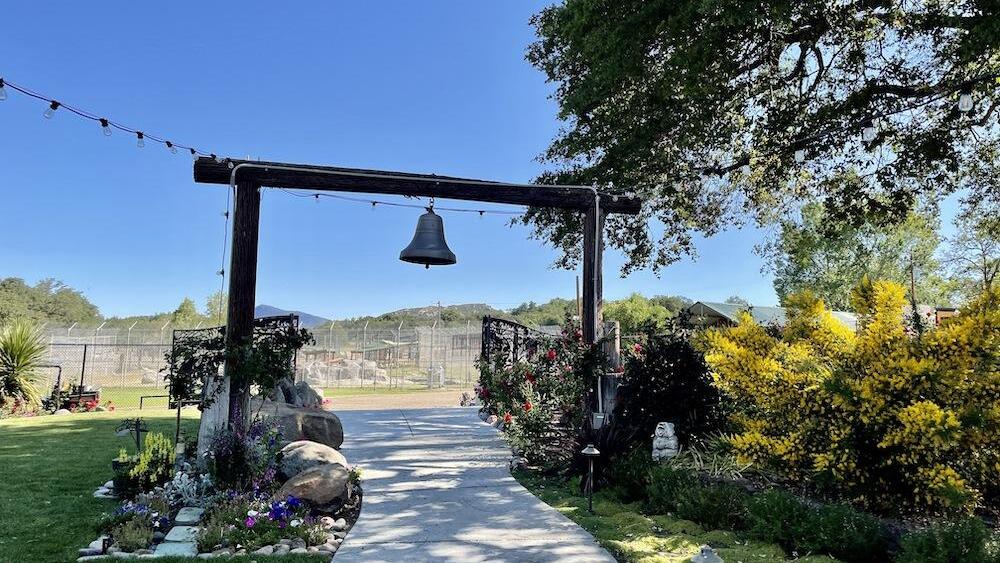
This section of the sanctuary is where Bobbi’s home is — and where her rental property is for visitors who want to stay the night. | Photo via Monica Garske + SDtoday
Q: What does the future of Lions, Tigers & Bears look like? How has the pandemic impacted your sanctuary?
A: COVID has been really hard; it’s really hard getting donations right now. So, we’re just trying to come up with creative fundraisers. We have private chefs come out and do dinners for guests — whatever raises money for the animals, you know? Spooky Campover where you can pitch a tent on the grass and stay the night [during Halloween season]. At Christmas we have our annual Christmas party where we give all the animals Christmas presents, which is fun to watch them run. We’re always looking for corporate sponsors so their name can be on the enrichment or the Christmas tree, for advertising.
Q: What is the fundraiser happening this Sat., May 21?
A: That’s our biggest gala — Wild in the Country — and it’s a live and silent auction, and an open house to the facility. There will be a full dinner and a dinner show with Rob Garrett, who’s known as the world’s best Neil Diamond impersonator. We’ll have stilt-walkers, cocktail bars, VIP hors d’oeuvres, the gift shop — just a good, fun, country day that helps us raise money for operating costs and the animals.
We have a brown bear that we’re trying to work on rescuing, so we’re trying to raise funds to re-do the existing habitat to fit him in hopes that we might be able to introduce him to our female brown bear. It’ll take a year or two to get them together, but hopefully we can introduce those two. She needs a friend.
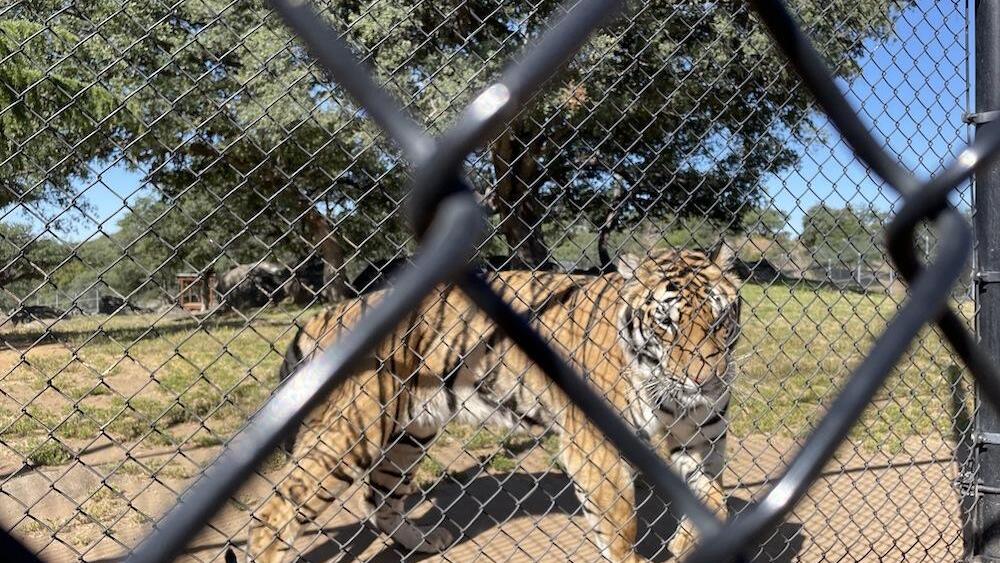
Meet Mocha. | Photo via Monica Garske + SDtoday
Q: You’ve dedicated your life to this. When you see people coming to the sanctuary, learning about the animals — what do you feel inside when you see people starting to understand what you’re doing here?
A: It’s 24/7. I feel good. I started out in the hospitality business and obviously God had a different path in mind — and it wasn’t hospitality. But they’re kind of working together to make this work and it’s really rewarding to see how happy people are here, and the love and passion that’s here. There’s none of the worldly BS, it’s not here. This is a loving, fun place. It’s very comfortable and relaxing.
Q: Is there anything else you want people to know?
A: The basics. People don’t know the exotic animal trade is second to drugs, weapons, and human trafficking. And how many animals have to die for one to make it into our country. Or just for idiot people to make a profit, ‘cause that’s all they care about — money. And just making a difference, one animal at a time. People helping animals, animals helping people. And it works.






